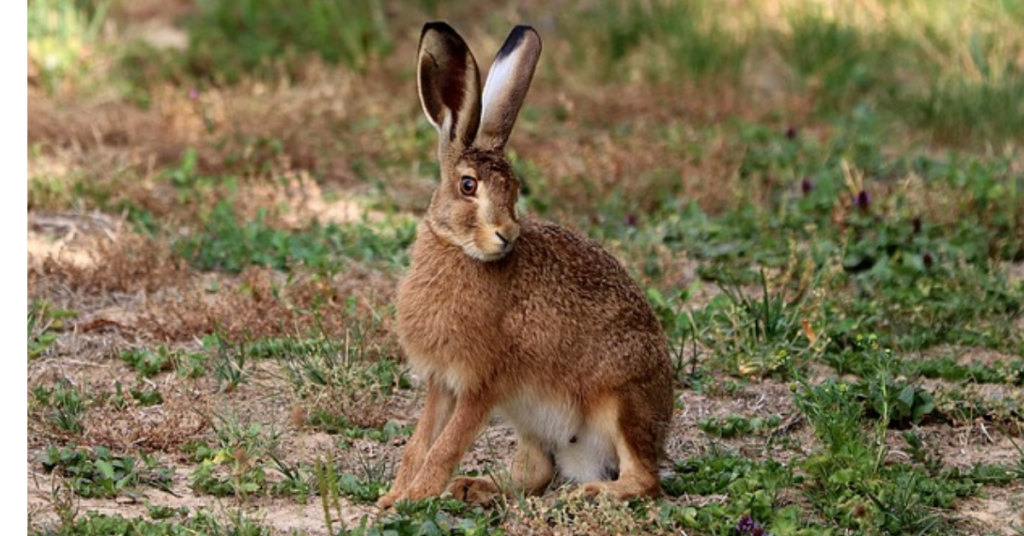Facts About Hares
Hares are intriguing mammals recognized for their speed, long ears, and generally solitary behavior. Here are some key facts and characteristics about hares.
So, hares are not big animals, but they are larger than rabbits and well-built for speed. Many of us get confused for hare and rabbit. So one wonders how big are hares? Here is the answer Hares are medium-sized animals. They are generally larger than rabbits but are not very big compared to many other animals.
Most hares weigh between 2 to 7 kilograms (4 to 15 pounds) and are about 40 to 70 centimeters (16 to 28 inches) in length. They have long ears and powerful hind legs, which help them run quickly to escape predators. There are other fun facts about hares we should know.

1. Species and Distribution
There are roughly 30 different species of hares found across the globe, with the exception of Antarctica. Notable species include the European hare (Lepus europaeus), Arctic hare (Lepus arcticus), and snowshoe hare (Lepus americanus). Hares inhabit a variety of landscapes, such as grasslands, deserts, forests, and tundra, showing their ability to adapt to different environments.
2. Physical Characteristics
Hares are larger than rabbits, distinguished by their longer ears and hind legs. Their highly sensitive ears help them detect predators from afar. The strong hind legs allow hares to run at impressive speeds, often reaching 60-70 kilometers per hour (37-43 mph), which helps them evade threats. Unlike rabbits, newborn hares are born with open eyes and a full coat of fur, enabling them to move about more freely soon after birth.
3. Behavior and Lifestyle
Generally, hares are solitary creatures, unlike the more social rabbits. They primarily come together during the breeding season. Instead of burrowing, hares make simple nests called “forms” in shallow ground depressions, where they lie low to avoid being spotted by predators. They are most active during dawn and dusk, a behavior known as being crepuscular, which helps them stay safe from predators.
One question in everyones mind, “is the hare animal dangerous or aggressive?”Hares are not generally aggressive or dangerous to humans. They are shy and tend to avoid confrontation. When threatened, they may become defensive, but they usually prefer to flee rather than fight. Hares can use their powerful legs to escape quickly from predators. So, while they can be startled, they pose little risk to people.
4. Diet
Hares are herbivores, feeding on grasses, leaves, bark, and various plants. Their diet varies with the seasons; in winter, they may consume more bark and twigs when other food sources are scarce. They also engage in a behavior called “coprophagy,” where they re-ingest their feces to digest food more thoroughly and absorb extra nutrients.
5. Reproduction
The breeding season for hares can last several months, varying by species and location. During this time, males compete for the attention of females, sometimes engaging in “boxing” behaviors. Female hares, known as “jills,” can have multiple litters each year, with each litter containing 1-8 young, called “leverets.” Leverets are born fully furred and are placed in separate locations to reduce the risk of predation, with the mother visiting once or twice daily to nurse them.
6. Adaptations to Cold Climates
Certain hare species, such as the Arctic hare and snowshoe hare, are well-adapted to cold environments. They have thick fur to retain body heat and fur-covered feet that act like snowshoes, allowing them to move more easily across the snow. Some species, like the snowshoe hare, also change fur color from brown in summer to white in winter for camouflage.
7. Threats and Conservation
Hares face various threats, including habitat loss, hunting, and climate change. Their natural predators include foxes, wolves, birds of prey, and humans. While many hare species have healthy populations, some, like the Hainan hare and Tehuantepec jackrabbit, are endangered due to habitat fragmentation and human activities. Conservation efforts are focused on habitat protection, hunting regulations, and monitoring population trends to ensure sustainable management.
Hares are remarkably adaptable animals, with unique traits that enable them to thrive in diverse habitats, from open grasslands to icy tundra regions.

